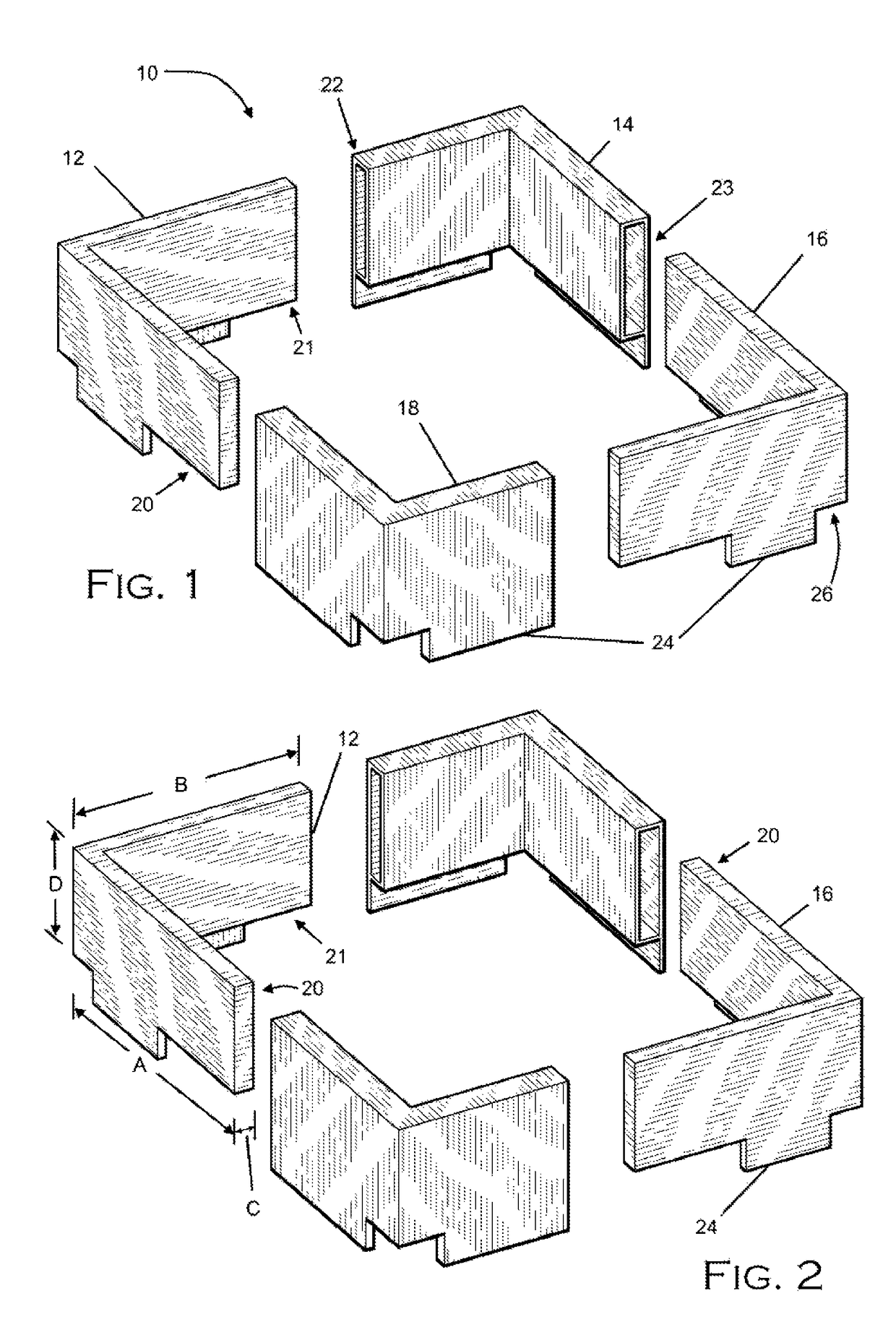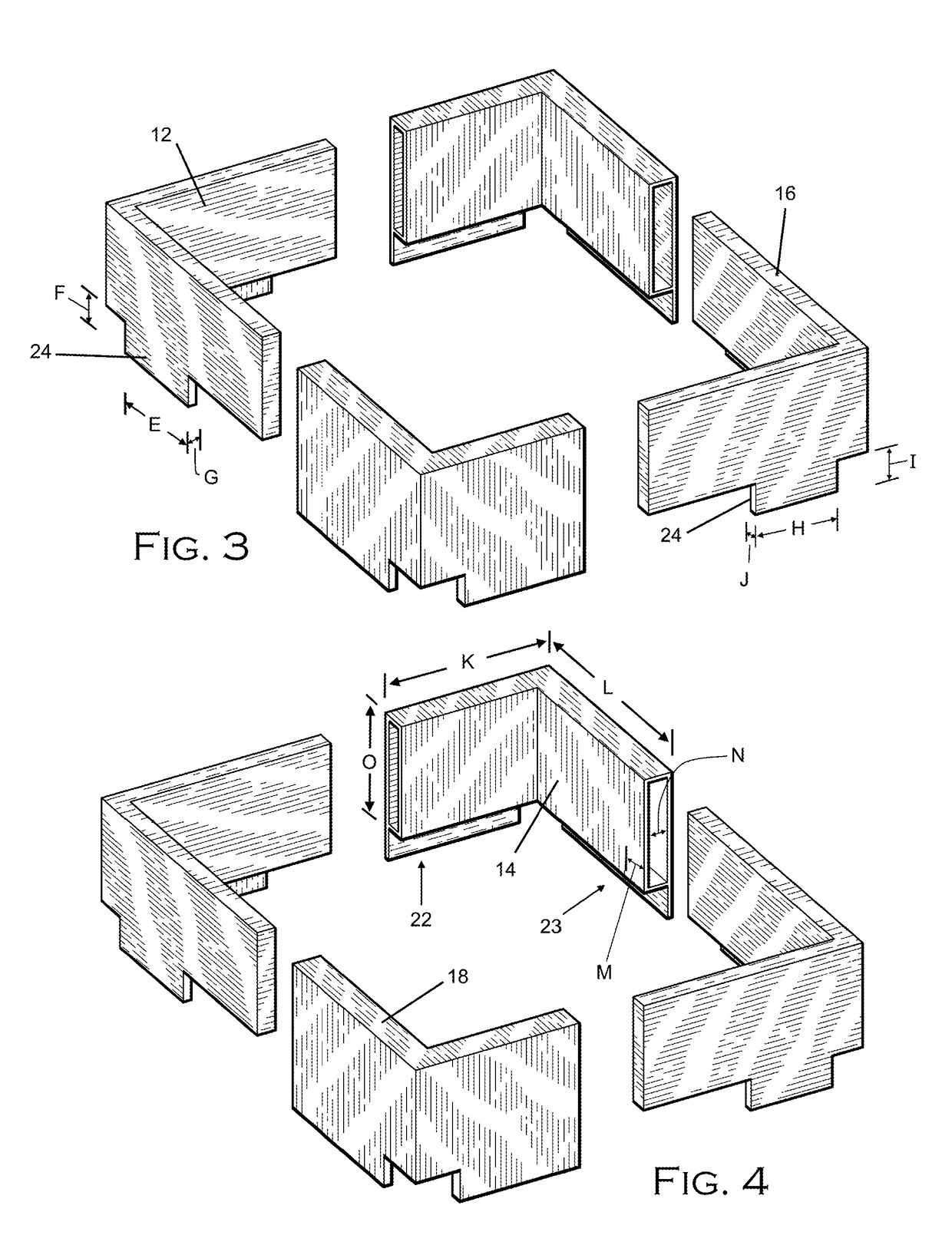Insulation barrier for ceiling hatch openings
a ceiling hatch and insulation barrier technology, applied in the direction of building repairs, instruments, signs, etc., can solve the problems of heat escape, low cost, and insecure four corners of the hatch opening, and achieve the effect of quick and easy assembly, less time, and convenient adjustment of joist spacing
- Summary
- Abstract
- Description
- Claims
- Application Information
AI Technical Summary
Benefits of technology
Problems solved by technology
Method used
Image
Examples
Embodiment Construction
[0014]Referring now to FIG. 1, an exploded view of an embodiment of the insulation dam is depicted generally at 10. The dam 10 comprises four main parts 12, 14, 16 and 18. Two of these parts are male pieces 12, 16 and two are female pieces 14, 18. The male pieces 12, 16 have inserting ends 20, 21 on the ends that slidably engage with the female pieces. The female pieces 14, 18 have receiving ends 22, 23. In preferred embodiments, the male pieces 12, 16 have sufficient length to allow an installer to slide the male pieces 12, 16 within the female pieces 14, 18 to accommodate different sizes of ceiling hatch openings.
[0015]Now referring to FIGS. 2 and 3, and by way of example only, a male piece 12 can have one inserting end 20 with a length A of about eighteen inches and the other inserting end 21 with a length B of about sixteen and one half inches. The male pieces 12, 16 are preferably solid with a width C of about one and three eighths inches. The height D of the male piece 12, 16 ...
PUM
 Login to View More
Login to View More Abstract
Description
Claims
Application Information
 Login to View More
Login to View More - R&D
- Intellectual Property
- Life Sciences
- Materials
- Tech Scout
- Unparalleled Data Quality
- Higher Quality Content
- 60% Fewer Hallucinations
Browse by: Latest US Patents, China's latest patents, Technical Efficacy Thesaurus, Application Domain, Technology Topic, Popular Technical Reports.
© 2025 PatSnap. All rights reserved.Legal|Privacy policy|Modern Slavery Act Transparency Statement|Sitemap|About US| Contact US: help@patsnap.com



